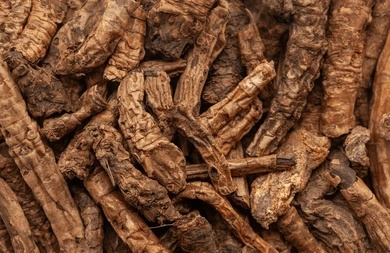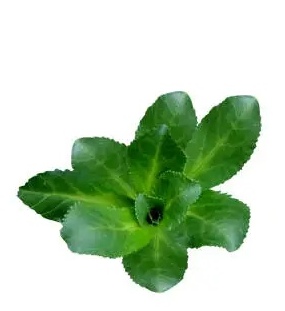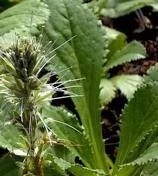Overview
Kutki, scientifically known as Picrorhiza kurroa, is a perennial herb primarily found in the Himalayan region. Renowned in Ayurveda and traditional medicine, Kutki has been used for centuries to treat a variety of ailments. The plant is valued for its rhizomes, which contain bioactive compounds such as picroside and kutkoside. These compounds are responsible for its potent medicinal properties.

Table of Contents
What is Kutki?
it (Picrorhiza kurroa) is a highly valued herb, particularly in traditional medicine systems like Ayurveda, Siddha, and Unani. It is a perennial plant native to the Himalayan region, found at high altitudes between 3,000 and 5,000 meters, typically growing in rocky and temperate areas. The plant is characterized by its small size, with a long, creeping root and narrow leaves, which are mostly inconspicuous in appearance. Despite its simple appearance, it is renowned for its powerful medicinal properties.
Known for its bitter taste, which gives it the name “Kutki” (meaning “bitter” in Sanskrit), this herb has been used for centuries for various therapeutic purposes. The root of the plant, in particular, is utilized in herbal formulations and remedies, as it contains bioactive compounds like picroside I and picroside II. These compounds are responsible for its beneficial effects on human health.
it is primarily recognized for its ability to support liver function and treat various liver-related issues. It has hepatoprotective properties that help in protecting the liver from damage caused by toxins, infections, or liver diseases like hepatitis and jaundice. Beyond liver health, Kutki is also known to support the digestive system, improving conditions such as indigestion, constipation, and bloating. The herb aids in detoxification, cleansing the body of harmful toxins and enhancing overall digestive health.
Additionally, it has powerful antioxidant and anti-inflammatory properties, making it beneficial for treating conditions like arthritis, respiratory disorders, and skin ailments. Its immune-boosting properties help to strengthen the body’s defenses against infections and illnesses. In modern herbal medicine, it is often used in supplements, teas, and extracts, though its use should always be under the guidance of a healthcare professional due to its potency.
Botanical Classification of Kutki

Kingdom: Plantae
Division: Angiosperms
Class: Eudicots
Order: Lamiales
Family: Plantaginaceae
Genus: Picrorhiza
Species: P. kurroa
Natural Habitat
it thrives in the cold and rocky terrains of the Himalayan regions of India, Nepal, and Tibet. It grows at altitudes between 3,000 and 5,000 meters and prefers well-drained soils rich in organic matter. The plant can often be found in alpine meadows and on the slopes of mountains.
Medicinal Benefits of Kutki
it has a wide array of medicinal uses, primarily due to its hepatoprotective, anti-inflammatory, antioxidant, and immunomodulatory properties. The rhizomes of it, is commonly used in herbal remedies for the following purposes:
- Liver Health: Helps detoxify the liver and supports the treatment of jaundice, hepatitis, and fatty liver.
- Digestive Support: Alleviates indigestion, acidity, and constipation.
- Anti-Inflammatory: Reduces inflammation in conditions like arthritis and asthma.
- Immune Booster: Enhances the body’s immune response and combats infections.
Health Benefits of Kutki
- Skin Health: Aids in managing skin disorders like eczema and psoriasis.
- Respiratory Relief: Beneficial for conditions like bronchitis and allergies.
- Weight Management: Supports metabolism and aids in weight management.
- Blood Sugar Regulation: May help in managing diabetes by improving insulin sensitivity.
its multifaceted health benefits make it a valuable herb in both traditional and modern medicine. However, its usage should be guided by a healthcare professional due to its potent effects.
Cultural Significance of Kutki
it holds a prominent place in traditional systems of medicine, particularly Ayurveda and Tibetan medicine. Revered as a sacred herb in Himalayan cultures, it is often used in rituals and remedies to purify the body and spirit. In Ayurveda, it is considered a “bitter tonic” and is classified under the category of herbs that balance Pitta and Kapha doshas. The herb is commonly associated with detoxification and rejuvenation, reflecting its deep-rooted cultural and medicinal importance.
Table of Chemical Components of Kutki (per 100g)

| Component | Concentration (approx.) | Function |
|---|---|---|
| Picroside-I & II | 2-4% | Liver protection, antioxidant |
| Kutkoside | 1-2% | Anti-inflammatory, hepatoprotective |
| Apocynin | 0.5-1% | Immunomodulatory, anti-asthmatic |
| Androsin | Trace | Bronchodilator, respiratory benefits |
| Glycosides | 5-6% | Detoxification, metabolic support |
| Iridoid glycosides | 2-3% | Anti-inflammatory, antioxidant |
| Flavonoids | 1-2% | Antioxidant, cardioprotective |
Scientific Research and Evidence Supporting Its Uses
Several studies have validated the traditional uses of Kutki:
- Liver Protection: Research published in the Journal of Ethnopharmacology highlighted Kutki’s hepatoprotective effects, showing its efficacy in treating liver injuries caused by toxins.
- Anti-Inflammatory Properties: A study in Phytotherapy Research found that Kutki reduced inflammation in animal models, supporting its traditional use for arthritis.
- Immune Boosting: A review in the Indian Journal of Medical Research confirmed Kutki’s role in enhancing immune response and reducing oxidative stress.
- Respiratory Benefits: Clinical trials have demonstrated its potential in managing asthma and bronchitis, attributed to its bronchodilator effects.
Benefits for Both Males and Females
For Males
- Enhances Liver Function: Improves detoxification, critical for overall vitality.
- Supports Reproductive Health: Helps manage stress-induced hormonal imbalances.
- Boosts Immunity: Protects against infections and fatigue.
For Females
- Balances Hormones: Useful for managing PCOS, menstrual irregularities, and menopause symptoms.
- Skin Health: Treats acne, pigmentation, and eczema.
- Weight Management: Enhances metabolism and supports weight loss.
Conditions and Situations in Which Kutki Should Not Be Consumed
- Pregnancy and Breastfeeding: Kutki may not be safe during pregnancy and lactation due to its strong bioactive compounds.
- Gallbladder Issues: Avoid in cases of gallstones or bile duct obstruction, as it stimulates bile flow.
- Low Blood Pressure: It may lower blood pressure further, posing a risk for hypotension.
- Autoimmune Disorders: Its immune-stimulating properties could worsen conditions like lupus or rheumatoid arthritis.
- Children Under 12: Should not be administered without medical supervision.
Chemical Components and Their Benefits
| Chemical Component | Benefit |
|---|---|
| Picroside-I & II | Protects liver cells, improves bile secretion. |
| Kutkoside | Reduces inflammation, enhances liver repair. |
| Apocynin | Relieves asthma symptoms, modulates immune response. |
| Glycosides | Aids digestion, supports detoxification processes. |
| Iridoid Glycosides | Provides antioxidant protection, reduces cellular damage. |
| Flavonoids | Protects heart health, combats oxidative stress. |
Kutki’s unique chemical composition makes it a versatile herb with wide-ranging health benefits. However, it must be used responsibly under professional guidance.
FAQs for “People Also Ask”
Can kutki reverse fatty liver?
Kutki (Picrorhiza kurroa) is traditionally used in Ayurveda for liver health. Some studies suggest it may support liver function, but reversing fatty liver typically involves comprehensive lifestyle changes, including diet and exercise, and should be overseen by a healthcare provider.
What is kutki and its uses?
Kutki is an herb used in Ayurvedic medicine, known for its liver-protective properties. It is often used to treat digestive disorders, enhance liver function, and as a general detoxifier.
Who should not take kutki?
Individuals with gallbladder issues or those who are pregnant or breastfeeding should consult a healthcare professional before taking kutki. It may also interact with certain medications.
क्या कुटकी फैटी लिवर को उलट सकती है?
कुटकी का उपयोग यकृत स्वास्थ्य में सहायता के लिए किया जाता है, लेकिन फैटी लिवर को पूरी तरह से उलटने के लिए केवल कुटकी पर निर्भर रहना उचित नहीं है। यह जीवनशैली में बदलाव के साथ एक सहायक हो सकता है।
Is kalmegh good for fatty liver?
Kalmegh (Andrographis paniculata) is believed to support liver health and may help with fatty liver, although more research is needed. Always consult a healthcare professional before starting any new treatment.
Is punarnava good for the kidneys?
Punarnava ( Boerhavia diffusa) is traditionally used in Ayurveda to promote kidney health and manage water retention. It may support renal function and has diuretic properties.
How can I reduce my fatty liver in 2 weeks?
To reduce fatty liver, focus on a balanced diet low in sugars and unhealthy fats, regular exercise, and weight management. Always consult a healthcare provider for personalized advice.
Is ashwagandha bad for the liver?
Ashwagandha is generally considered safe and may even support liver health; however, excessive intake may lead to side effects. It’s best to consult a healthcare provider.
Which tablet reduce fatty liver?
Some people may use herbal supplements or medications like vitamin E and certain prescriptions as advised by healthcare professionals to help manage fatty liver.
What is another name for kutki?
Kutki is also known as Picrorhiza kurroa or “Himalayan Gold.”
Is kutki a laxative?
Kutki is not primarily known as a laxative. It is mainly used for liver health and digestive support.
What to avoid with Ayurvedic medicine?
When taking Ayurvedic medicine, avoid processed foods, excessive sugar, and alcohol. Some herbs may also interact with medications, so it’s important to inform your healthcare provider of all supplements you are taking.
Can we take kalmegh daily?
Kalmegh can often be taken daily, but it’s important to follow recommended dosages and consult a healthcare professional for long-term use.
What is the best supplement to cure fatty liver?
There is no one-size-fits-all supplement for curing fatty liver. A combination of lifestyle changes and certain supplements, like milk thistle or omega-3 fatty acids, may help, but it’s best to consult a healthcare provider.
What is the best herbal for fatty liver?
Milk thistle, turmeric, and kutki are traditionally used herbs that may support liver health. Always consult a healthcare provider for personalized recommendations.
How much kutki per day?
A typical dosage of kutki varies but is often around 500-1000 mg per day, depending on the preparation. Consult a healthcare professional for personal recommendations.
What are the side effects of kutki?
Kutki is generally well-tolerated, but potential side effects may include digestive upset or allergic reactions. Consult a healthcare provider if you experience any adverse effects.
How to use kutki?
Kutki can be used in powder, capsule, or extract form. It is often taken with warm water or as part of herbal formulations. Consult a healthcare provider for the best method of use for your situation.
Which is better, Kutki powder or capsules?
The choice between kutki powder and capsules depends on personal preference. Powder may be more versatile for mixing with other ingredients, while capsules can be more convenient.
Is kutki good for heart?
Kutki is primarily known for its liver health benefits, and there isn’t extensive research on its effects on heart health. Always consult with a healthcare provider for specific concerns.
Is bhringrajasava good for hair?
Bhringrajasava is traditionally used in Ayurveda for promoting hair health and may help improve hair growth and reduce hair loss.
Which herb is the king of hair?
Bhringraj (Eclipta alba) is often referred to as the “king of herbs” for hair due to its strong reputation in promoting healthy hair and preventing hair loss.
Does bhringraj have side effects?
Bhringraj is generally safe for topical use. However, oral consumption should be done under the guidance of a healthcare provider, as it may cause gastrointestinal disturbance in some individuals.
Which is the original Baidyanath company?
Baidyanath is a well-known Ayurvedic company in India with a legacy dating back to 1917, founded by Pandit Ram Narayan Sharma.
Which is better, Patanjali or Baidyanath?
Both Patanjali and Baidyanath offer a range of Ayurvedic products, and the choice may depend on individual preferences, availability, and the specific product in question.
Who is the god of Baidyanath?
In Hindu mythology, Lord Shiva is often referred to as “Vaidyanath,” which translates to “God of Medicine,” and is associated with healing and health.
Which Ayurvedic brand is best?
The “best” Ayurvedic brand can vary based on personal needs, preferences, and product effectiveness. Baidyanath, Patanjali, Zandu, and Himalaya are some of the popular brands.
Which is better, Zandu or Baidyanath?
Both Zandu and Baidyanath are reputable Ayurvedic companies; the choice may depend on personal product efficacy and preference.
Which is the king of Ayurveda herbs?
Ashwagandha is often referred to as the “king of herbs” in Ayurveda due to its versatility and numerous health benefits.
Is Patanjali really Ayurvedic?
Patanjali claims to offer genuine Ayurvedic products; however, the quality and effectiveness can vary. Always look for certifications and check reviews before purchasing.
